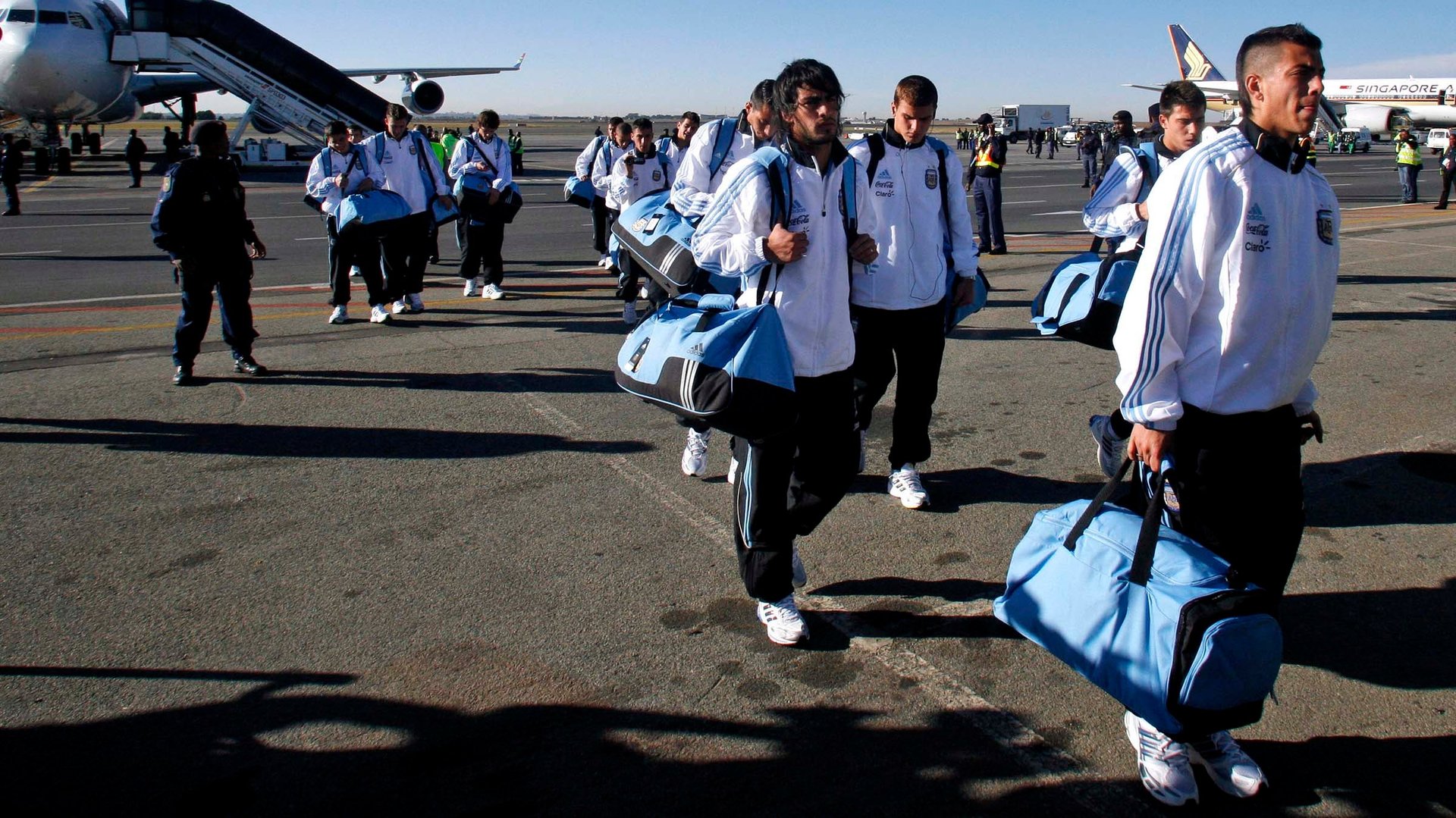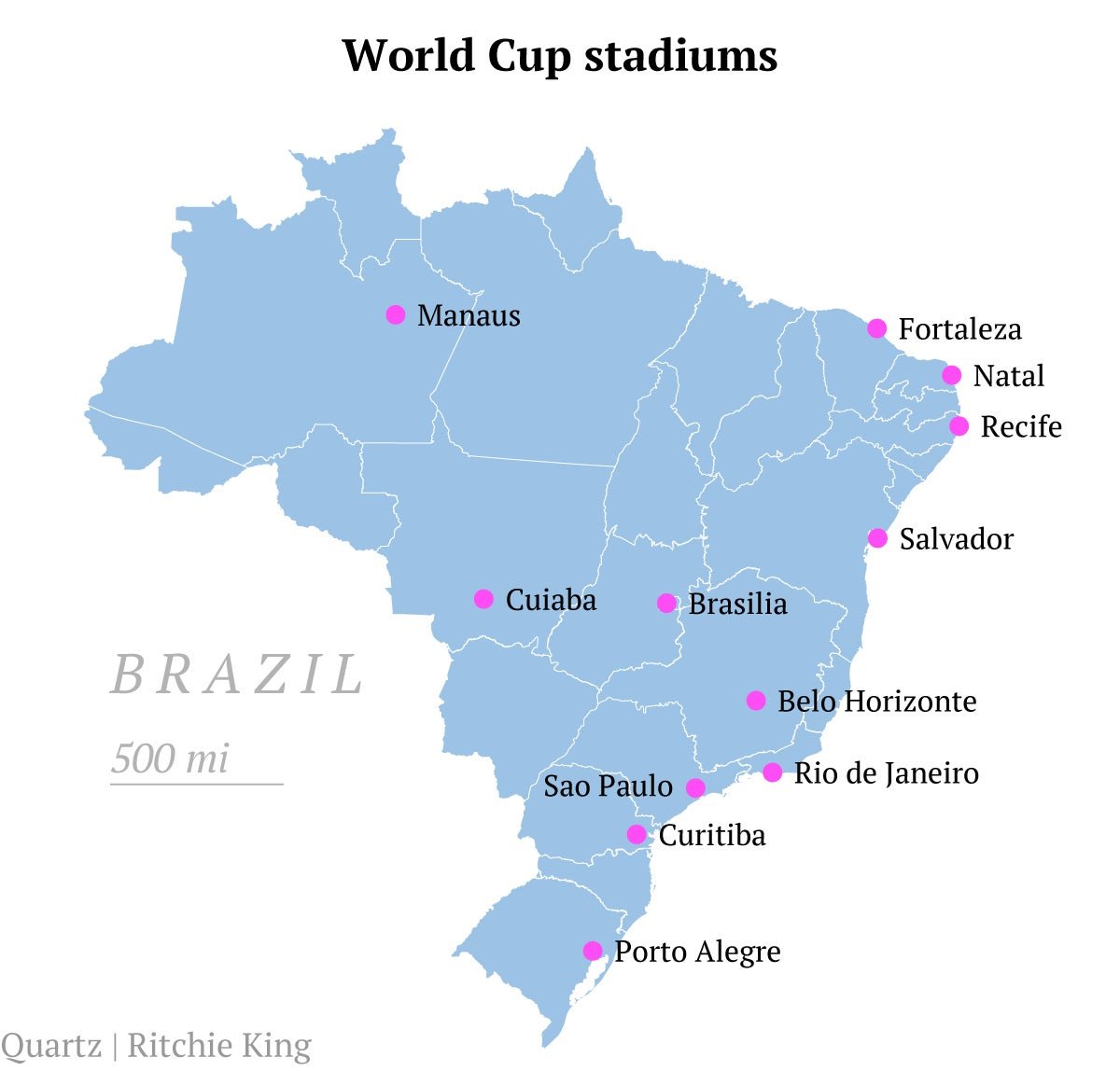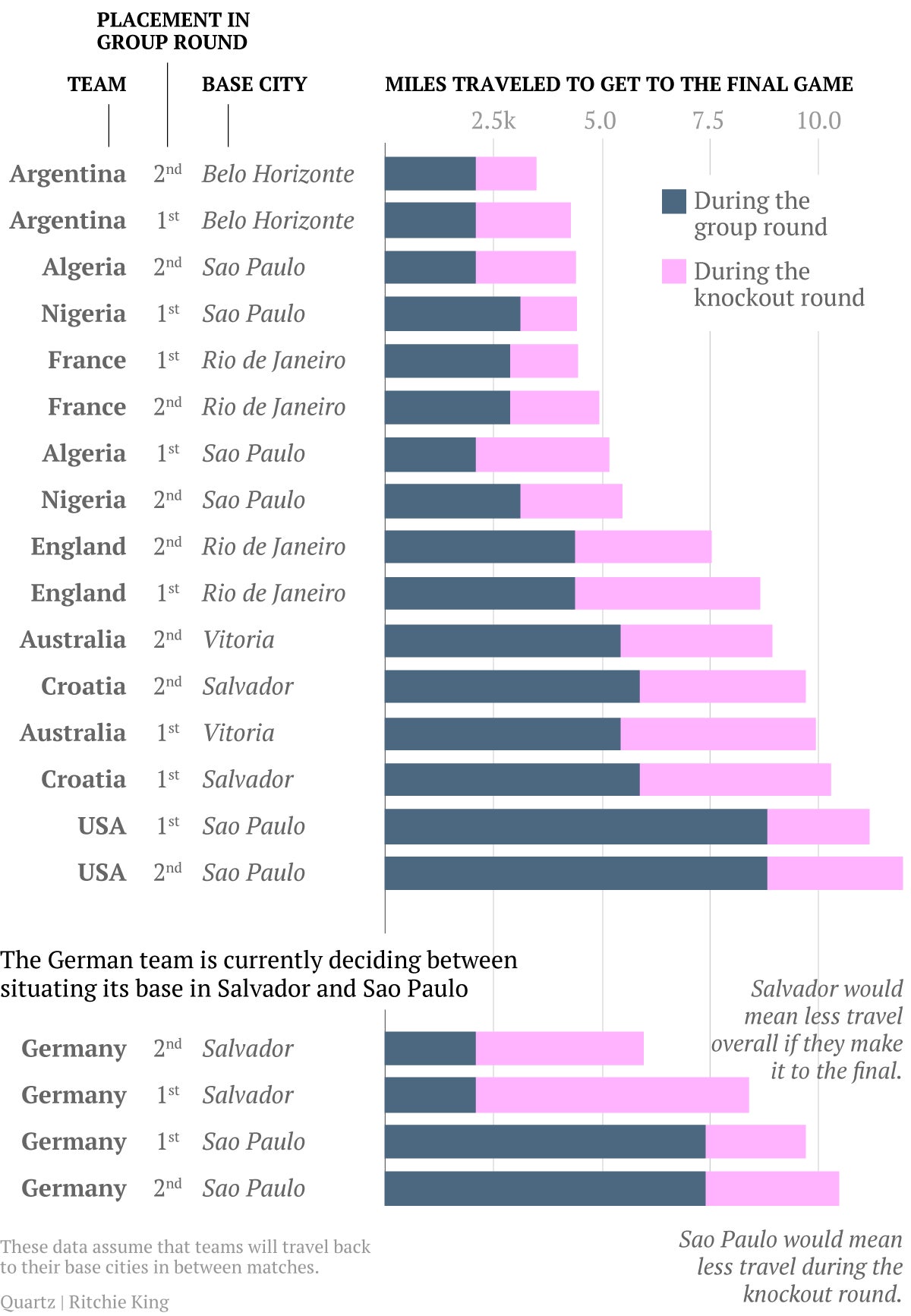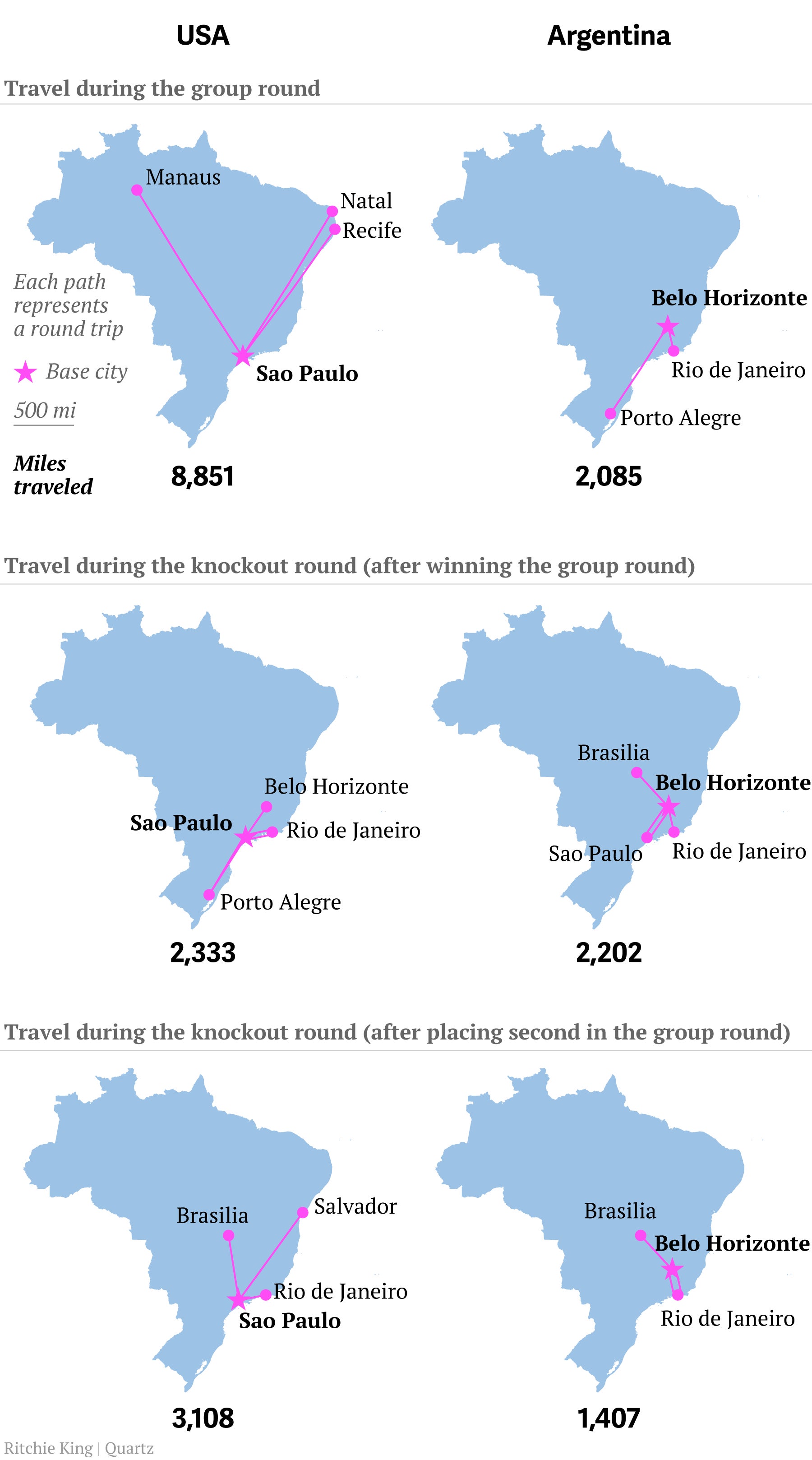During the World Cup, teams will travel halfway around the world and never leave Brazil
Professional athletes don’t travel like the rest of us. To ensure that they remain in peak physical condition, few expenses are spared when shuttling them around the world. But regardless of how luxurious a cabin is, spending a long time in a pressurized plane inevitably hurts athletic performance.


Professional athletes don’t travel like the rest of us. To ensure that they remain in peak physical condition, few expenses are spared when shuttling them around the world. But regardless of how luxurious a cabin is, spending a long time in a pressurized plane inevitably hurts athletic performance.
This could be a factor during next year’s soccer World Cup in Brazil, the world’s fifth-largest country by land area. Matches will be held in 12 cities across the country—some of them thousands of miles apart. Since teams generally make round-trips from their training base to each match, some will see the miles add up more than others as the tournament progresses.
That’s why the location of a team’s training base is even more important than usual in this World Cup. For the eight squads that have already announced their base camp locations (*see our note at the bottom), Quartz calculated the distances these players can expect to travel en route to the final. (The rest of the teams will choose their base camp from 83 designated locations, with a list of preferences due later this month and final decisions announced by the end of January.)
On average, the winning team will trek around 7,500 miles (12,070 km) during the month of the tournament—but some teams will travel as much as 12,000 miles (about half the circumference of Earth). And this only counts the distances between host cities by air, excluding the potentially stressful journeys to and from training camps, airports and stadiums on Brazil’s famously creaky ground transport network. Of course, many factors besides travel distance will determine which team lifts the World Cup next year. But for teams in search of an extra edge, shaving a few thousand miles off their route to the final could be a shrewd strategy.

Location, location, location
The group round matches have been decided, so those distances are known. A team’s path through the subsequent 16-team, single-elimination knockout stage (playoffs) depends on where it finishes in the group stage, with first- and second-place teams placed on opposite sides of the draw. (The third- and fourth-placed teams hop on a plane with a one-way ticket home.) Thus, there are two potential paths for a team to take to the final, depending on whether it wins its group or finishes as runner-up.

Based on what we know so far, here are a few observations:
Germany faces a telling decision
Germany is reportedly mulling a base in either Salvador or Sao Paulo. Its decision will say a lot about its confidence in its chances. Seeded in the same “group of death” as the US, Portugal and Ghana, Germany can choose to shorten its travel by thousands of miles during the group round or the knockout stage, but not both. Thus, whether it thinks its players will need more rest at the beginning of the competition (in which case it should choose Salvador, with 5,000 fewer miles of travel during the group round than Sao Paulo) or towards the end (Sao Paulo, with up to 4,000 fewer miles traveled than Salvador during the knockout stage) will reveal how it rates its chances of progressing into the tournament’s final stages.
Finishing first is not always best (for travel)
If a team finishes first in its group, it faces a weaker opponent—in theory—in the first match in the knockout stage. This is incentive enough for teams to try to win all of their games during the group round, even if a second-place finish also earns them a place in the next phase of the tournament.
If travel distance is an important factor, five of the eight teams that have picked a base city (and six of nine if Germany chooses Salvador) would be better off as runners-up than group winners. For Australia and England, the route to the final via a second-place finish in the group stages is more than 1,000 miles shorter than if they win their groups.
The US will collect far more frequent-flyer miles than Argentina
The US will not only only face the strongest group in the draw, but its choice to base itself in Sao Paulo makes for a punishing travel schedule, as it sits far away from the slate of group matches in Natal, Manaus and Recife. The team will travel nearly 9,000 miles during the group stage, more than any of the other teams whose base camps we know of so far. Though its knockout-stage schedule is less demanding, the US squad will still rack up more miles on its way to the final than any other team in our sample .
Argentina faces a much more leisurely schedule by comparison. From its base camp in Belo Horizonte, it looks set to travel the least among the teams we analyzed. This has led some to entertain conspiracy theories, given that the team chose its base city well before the group stage draw.
Here is what the US team’s itinerary looks like next to Argentina’s:

Thus, in the event of an Argentina-US final, the South Americans will have clocked at least 7,000 fewer miles criss-crossing Brazil en route to the final. This could make all the difference. (Although, in truth, having Lionel Messi on their team probably makes more of a difference.)
*Last night, Spain announced that it would base its team in the southern city of Curitiba. This was not included in Quartz’s analysis.